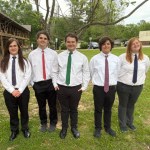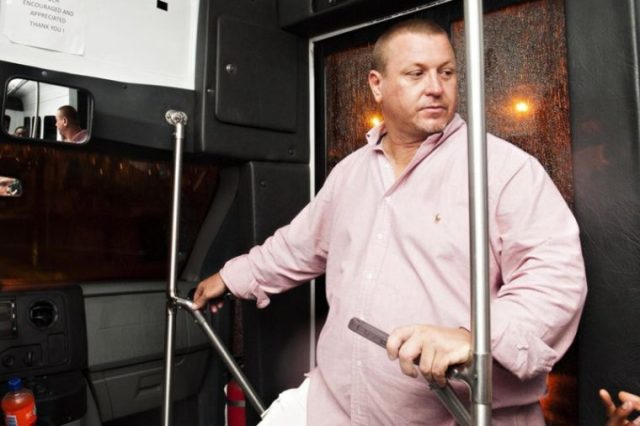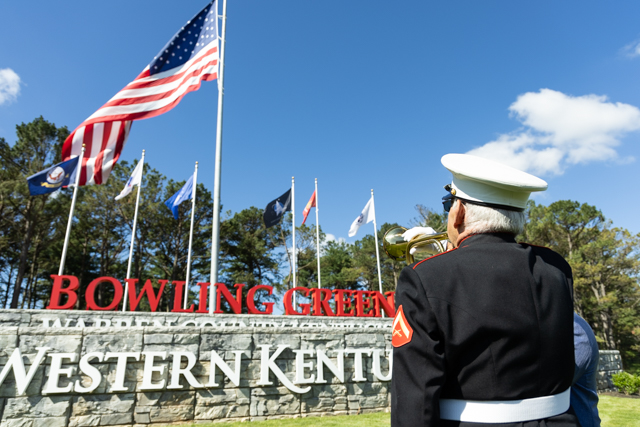Two Warren teams earn top honors in Envirothon
Published 8:45 am Friday, May 23, 2025


DAVID MAMARIL HOROWITZ
david.horowitz@bgdailynews.com
Identifying trees. Jumping into a pit of soil. Analyzing a kit that tests water quality.
Numerous educational environmental tasks and tests were assigned to competition-takers across the state last week. Two local high school teams of five achieved top honors in this Envirothon — the hands-on environmental science competition surrounding the categories of soils, forestry, aquatics, wildlife and a current issue.
“They don’t have stadiums full of people cheering for them, yet they worked just as hard as any athlete to compete at the level that they did,” said Penny Warwick, who coached three teams in Warren County.
Gatton Academy’s team won first against 38 teams statewide. The Greenwood High FFA team tied first in one of the five categories, concerning a current issue, and ranked as the top FFA team statewide while finishing third overall.
“In three words: excited, proud, and surprised,” Gatton’s team president Sydney Putnam said of her team’s win.
Putnam had spent much of her childhood outdoors as she grew up on a central Kentucky farm. She would visit her grandparents’ house and play at a creek on land surrounded by forest. She can recall walking through the woods with her grandfather as he pointed out tree species.
In recent years, she said, certain plants, such as bush honeysuckle, have become more common along the creek. Because it grows in thickets and chokes out what grows naturally in the understory, they’ve had to manually clear it out.
“When I joined Envirothon, I learned that it was invasive and was having a similar effect throughout the state,” she said. “I’ve seen firsthand what invasive species can do to the environment, and Envirothon has helped me to connect these observations and experiences to a broader context, and learn what steps government agencies are taking to deal with these issues …
“Looking back, these experiences are probably part of why I chose to specialize in forestry.”
For the tree identification challenge, they identified 10 trees in a forest. It was her favorite part of the competition.
For Putnam’s teammates, it was the first Envirothon. With much study, they still managed second place at the April regional competition. Going into state, the team had one main thing in mind, Putnam said: beating the number-one regional team, Fayette.
After placing second, they visited Western Kentucky University’s soil lab and studied areas they missed at regionals.
“We studied bat (identification) so much that when we came to the wildlife (identification) station at state, we immediately knew what bats we were looking at,” she said.
The team, Putnam added, is excited to represent Kentucky at the international “national” competition in Canada in July.
“We already made and color-coded our document for the new set of learning targets,” she said.
Her teammate Helen Rose particularly enjoyed the aquatic section.
One of the more interesting parts for Rose was when the team needed to identify a new part of a water quality test kit: Two of her teammates sniffed it, recalled the smell of a petri dish from biology class and recognized the part as an R-CARD, which is used for testing water for E. coli.
With a longtime interest in environmental studies, Rose is leaning toward going into data science and perhaps applying that to environmental policy. Her team, she said, could choose different parts of the competition — and she specialized in agencies and acts.
“I think it just encouraged my interest in environmental policy and gave me a better understanding of, sort of, the Kentucky version of it,” she said.
Together, the Greenwood team was the high school’s first FFA team to place first statewide among FFA organizations, its team captain Blaine Young said.
“Frankly, I feel very proud of it,” Young said.
It required teamwork that spanned different specializations within each category.
Young recalled, for instance, the soil challenge, where a team member went into a soil pit, and several tables were set up within the vicinity. At one, for example, a student analyzed soil color, while at another, a student looked at texture; Young, meanwhile, used a clinometer to determine slope and soil and utilized survey charting and mapping to answer questions related to the soil and their location.
Together, the team could determine the soil’s unique characteristics and what kind of things the land can be used for — for example, housing or farmland.
Team members self-studied as well as practiced together almost every week since last September, Young said. They’d go to the park to identify trees and work with a WKU professor to conduct soil labs, he said. They’d also have guided practices in forests about leaf and bark characteristics to identify trees, added his teammate Joseph Strom.
“I would say we had a great time together in practice and even in competition,” Strom said.








